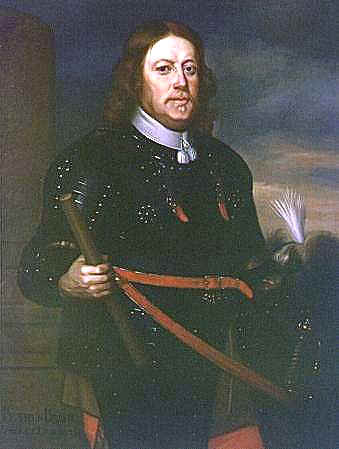<Back to Index>
- Philologist Issac Casaubon, 1559
- Writer Nikos Kazantzakis, 1883
- Lord High Steward of Sweden Per Brahe the Younger, 1602
PAGE SPONSOR

Count Per Brahe the Younger (February 18, 1602 – September 2, 1680) was a Swedish soldier and statesman. He was a Privy Councillor from 1630 and Lord High Steward from 1640.
Brahe was born on the island of Rydboholm (now in Österåker Municipality) in Uppland. He was the grandson of Per Brahe (the elder) (1520 – 1590), one of Gustavus Vasa's Privy Councillors, created count of Visingsborg by Eric XIV of Sweden, known also as the continuator of Peder Svart's chronicle of Gustavus, and author of Oeconomia in 1585, a manual for young noblemen. Per Brahe the younger, after completing his education by several years’ travel abroad, became in 1626 chamberlain to Gustavus Adolphus, whose lasting friendship he gained.
He fought with distinction in Prussia during the last three years of the Polish War (1626 – 1629) and also, as colonel of a regiment of horse, in 1630 in Germany. After the death of Gustavus Adolphus in 1632 his military yielded to his political activity. He had been elected president or Lantmarskalk at the Riksdag of 1629, and in the following year was created a Privy Councillor. In 1635 he conducted the negotiations for an armistice with Poland (Treaty of Stuhmsdorf).
In 1637 – 1640 and again in 1648 – 1654 he was Governor General in Finland, to which country he rendered inestimable services by his wise and provident rule. He reformed the whole administration, introduced a postal system, founded ten new towns, improved and developed commerce and agriculture, and very greatly promoted education. In 1640 he opened the Royal Academy of Turku, of which he was the founder, and first chancellor. Still today the expression "Kreivin aikaan", or "at Count's Time" in the Finnish language means "at the correct / good time". The base of his statue in Turku bears the inscription "I was well pleased with the land and the land with me".
After the death of Charles X of Sweden in 1660, Brahe, as Lord High Steward, became one of the regents of Sweden for the second time (he had held a similar office during the minority of Christina, 1632 – 1644), and during the difficult year 1660 he had entire control of both foreign and domestic affairs. He died on September 2, 1680, at his castle Bogesund in Uppland. He also held the castles Visingsborg at Visingsö and Brahehus on the mainland by Gränna, where during his lifetime he had held more than regal pomp.